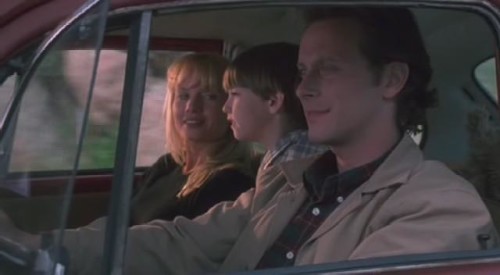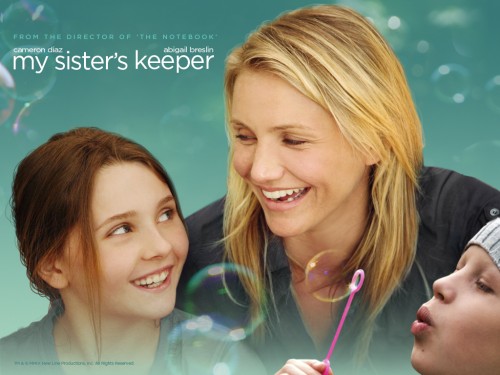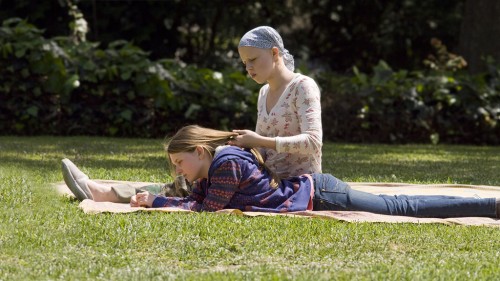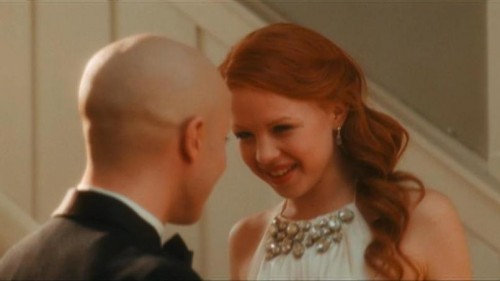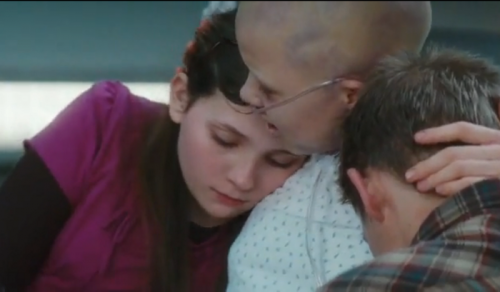This is a guest post by Brigit McCone.
With so much feminist discussion of the Objectifying Male Gaze(TM) and its effects, we often fail to consider the hetero-female objectifying gaze, or scopophilia, in visual media. Indeed, feminist film critic Laura Mulvey effectively denied its existence in her influential 1975 essay “Visual Pleasure and Narrative Cinema,” which states that women “cannot view the decline of the traditional film form with anything more than sentimental regret” as female onscreen presence must monolithically serve as passive erotic fetish for the Male Gaze, unless scopophilic pleasure is disrupted by radical techniques. I would argue that genres dominated by female scopophilia and sexual tension, such as the YA Supernatural Action Romantic Comedy (SARCom) genre, challenge Mulvey’s paradigm and allow us better understanding of the role of desire in shaping visual media.
SARCom was created in 1987 by the manga artist Rumiko Takahashi’s Ranma 1/2. Her mixture of kung-fu demon-of-the-week fights, romance and comedy, with a supernaturally strong heroine, dual shapeshifting supernaturally strong love interests and sarcastically quipping sidekicks, was then a completely unique story and rapidly became popular in the West and Japan. Takahashi’s creative control as visual and story artist (particularly after the success of the slapstick Urusei Yatsura) meant that the aesthetics of SARCom were shaped by the female gaze from the outset. Among its innovations, Ranma 1/2 introduces an Ice Prince/Wolf love rivalry between the hero Ranma and his rival Ryoga, a trope Takahashi would develop in her next SARCom Inuyasha. Joss Whedon’s Buffy the Vampire Slayer popularized the SARCom in mainstream Western culture, developing its own Ice Prince/Wolf rivalry with the characters Angel and Spike. The Ice Prince/Wolf dynamic now dominates teen girl cinema, after Catherine Hardwicke’s Twilight made her the most commercially successful female director of all time.
Twilight‘s inversion of Mulvey’s gendered model of cinema, with Hardwicke’s camera continually privileging Kristen Stewart’s gaze as Bella Swan, and offering Robert Pattinson’s Edward Cullen as erotic spectacle, would be interesting to analyze. Twilight also almost fails a reverse-Bechdel through the intense Bellacentrism of all its characters. In this essay, however, I would like to focus on the Ice Prince/Wolf rivalry itself, as a generic trope of SARCom, and its illuminating parallels with the male Madonna/Whore complex.
Celebrating Celibacy: The “Ice Prince” Archetype
The defining characteristic of the “Ice Prince” is his combination of emotional fidelity and sexual unavailability, generally accompanied by emphasized superiority and by physical threat. Ranma, the hero of Ranma 1/2, not only rivals the heroine Akane in martial arts, but periodically transforms into a girl more sexually attractive than she is. This tantalizing superiority in femininity enhances the character’s sexual unavailability; the world of Ranma 1/2 plays with gender but is strictly heteronormative with biological sex. His loyalty and rescuing of Akane go alongside Ranma’s constant sexual frigidity. Ranma 1/2 occupies an intermediate position between the shounen (boys’ manga) harem plot of Takahashi’s previous Urusei Yatsura and the love rivalries of her later Inuyasha: as a shounen hero, Ranma is the center of a harem of sex-crazed women, but as a shoujo (girls’ manga) “ice prince” he must be sexually attracted to none of them.
Inuyasha tames its threateningly feral hero, while maintaining his sexual unavailability, by making him frustratingly in love with a previous incarnation of the heroine Kagome – thus, he loves Kagome as a reincarnation, but cannot consummate this love due to his fidelity to the original.
The most extreme “Ice Prince” archetype in Takahashi’s work is Sesshomaru, the haughty, aristocratic pureblood demon introduced as a villain, accompanied by a sycophantic toady, and attempting to cheat his socially inferior, half-brother Inuyasha out of his inheritance; that is, almost exactly the set-up of Fitzwilliam Darcy in Pride & Prejudice. The character is also redeemed by Austen’s strategy: meeting an open-hearted, mischievous and unintimidated girl whom he struggles to scorn as inferior; having his flaws contextualized by introducing his controlling, snobbish mother; finally, risking everything to rescue the redeemer-girl. Introducing a poison-clawed Demon Dog Darcy, with the power to raise the dead and blast his enemies to hell, unbalances Inuyasha: Sesshomaru’s well-written redemption arc commences just as Inuyasha’s own arc grinds to a halt, spending a hundred chapters randomly upgrading his sword while the fandom sways toward the narratively marginalized Sesshomaru. Demon Dog Darcy is then forced to hand his emotionally-earned powers over to Inuyasha in an exasperatingly contrived plot twist. But Sesshomaru’s very marginalization in Inuyasha‘s narrative, and total detachment from the main heroine, function to intensify fangirl emotional and sexual frustration: the ultimate aim of any Ice Prince. Although Demon Dog Darcy progressively thaws emotionally, the character’s sexual unavailability is emphasized by spiked armor encircling his chest and maintained by filling the “Elizabeth Bennet” role with a pre-pubescent girl (one fervently hopes).
In Buffy the Vampire Slayer, Angel loves and saves Buffy but is made sexually unavailable by a curse that he will lose his soul if he has sex with her. This loss of soul also allows the intensification of Angel’s physical threat and sadism, while permitting the ‘real’ Angel to remain a dutiful lover. Twilight likewise presents Edward Cullen as a deeply loving and loyal ‘Ice Prince’ who threatens Bella repeatedly by mentioning his urge to devour her and, of course, is sexually unavailable through his fear of ‘losing control’.
Demon-in-Distress: The “Wolf” Archetype
The defining characteristic of the ‘Wolf’ is his combination of desperate emotional and sexual availability with repeatedly emphasized vulnerability and animalism. The most exaggeratedly vulnerable is Ranma 1/2‘s Ryoga, a little boy lost in the literal sense that he farcically lacks any sense of direction. The fanged, impulsive Ryoga’s regular transformations into a small, cute piglet add to his vulnerability. His inability to tell the heroine Akane of his true nature and feelings, out of fear of losing his privileged access as her pet pig, forms a near-perfect satire of the “Friendzone” phenomenon.
Inuyasha‘s impulsive, hotheaded Koga, a Ryoga lookalike, is a wolf-demon. In contrast to the elusive, emotionally conflicted hero Inuyasha, Koga falls for the heroine Kagome almost immediately and pursues her consistently. The manga is notable for constantly placing Koga in helpless ‘demon-in-distress’ situations requiring rescue, and for counterbalancing Sesshomaru’s spiked, hug-repellent armor and Inuyasha’s loose robes with Koga’s skimpy armor and furred micro-miniskirt, concealing his crotch only by careful choice of viewing angle.
Although Buffy‘s Spike is a vampire, theoretically an “ice prince” archetype, the character bears a dog’s name and typical ‘wolf’ impulsiveness and romantic vulnerability. In his second season introduction, he is confined to a wheelchair and forced to watch his beloved Drusilla seduced by “Ice Prince” rival Angel. In the third season, he’s pathetically dumped and weeping. In the fourth, he’s neutered by a brain chip that zaps him for attacking, so ‘he doesn’t chase the other puppies anymore’. In the fifth, the trope of Spike’s nakedness is introduced as vulnerability; he bares his chest to Buffy’s stake and confesses his love. This sequence is revealed as Spike’s dream; he is stripped and Buffy is fully clothed even in his own sexual fantasies. Spike is also stripped and tortured for love of Buffy by the dominant, female deity Glory in this season. In the sixth, after their first sexual encounter, Buffy is again fully clothed, abusing Spike verbally while he sprawls naked and defenseless. She repeatedly violates his sexual boundaries from a position of dominance; his attempt to force himself on her is presented as a crime of pathetic desperation. Though “Ice Prince” Angel wishes to torment and kill Buffy when he is soulless, Spike’s soulless state is no obstacle to his love – the emotional dependence of the ‘wolf’ knows no bounds.
Twilight’s Jacob Black is another wolf defined by constant loyalty, before attempting to force himself onto Bella in an act portrayed as pathetic desperation. Where Edward’s brief moment of toplessness is a dramatic, suicidal act that will dazzle a watching crowd, Jacob’s toplessness and skimpy attire are chronic, underlining his availability.
Shishihokodan! Or, Why Team Jacob Loses
Comparing the fandom of all four series reveals an interesting trend: fangirls are roughly equally divided between Team Jacob and Team Edward, Team Spike and Team Angel, Team Ryoga and Team Ranma, Team Koga and Team Inuyasha; nonetheless, the “Ice Prince” always gets the girl. It would be easy to blame the creators. Yet, Stephenie Meyer claims to be “Team Jacob.” Both Marti Noxon and Jane Espenson Buffy‘s main female writer/directors have made statements in support of the BuffyXSpike romance. Rumiko Takahashi’s writings in the romcom genre, Maison Ikkoku and One Pound Gospel, also reward and root for heroes in the vulnerable ‘wolf’ mode, and it is Takahashi who provides a structural explanation for ‘ice prince’ triumph with Ranma 1/2‘s Shishihokodan arc.
The “Shishihokodan” is a blast of energy which enables perpetual loser Ryoga to defeat the hero Ranma by harnessing his heartbreak. Ranma attempts to defeat the all-powerful Shishihokodan with a confidence-blast, but can only triumph by giving Ryoga momentary hope of sexual opportunity. In other words, Ryoga loses not because he is inferior, but because losing is the paradoxical source of his power. Any woman attracted to the “wolf” archetype is inherently drawn to vulnerability; her attraction is intensified by the wolf’s heartbroken rejection. Any woman attracted to the ‘ice prince’ is inherently drawn to dominance; her attraction is conversely reduced by his loss of mastery. As such, pursuing the resistant hero and resisting the pursuing hero create positively and negatively charged polarities to an explosive battery of sexual tension, a narrative trap which dooms the “wolf,” as Takahashi showed herself sympathetically aware with the Shishihokodan arc.
The wolf is difficult to dispose of: any alternative love interest would undermine his painful availability, thus one must be introduced with unsatisfactory suddenness at the last minute. The sudden arrival of a pig-fetishist marks Ryoga’s sidelining in Ranma 1/2; a wolf-girl for Koga is a last-minute addition to the Inuyasha anime, while Koga simply loses his previously foolhardy fighting spirit, forgets his long-established vengeance vendetta and slinks out of the original manga after admitting that Kagome should be with Inuyasha. Most disturbingly, the newly-arrived love interest for Jacob Black is literally newly-arrived as a newborn; his obsessive need to psychologically groom an infant into a future bride doesn’t bother the infant’s parents, presumably merely relieved that the wolf has been disposed of. More satisfyingly, rather than slinking away Koga-style, Spike’s acceptance that Buffy can’t love him “but thanks for saying” allows him to destroy the Hellmouth and be redeemed, incinerating himself in a spectacular blast of purest Shishihokodan.

What does this mean for our reading of film representations of male Madonna/Whore complex? It implies the continual defeat of the Whore as structural necessity – as a pursuing character she must be resisted to generate sexual tension, regardless of whether the author is Team Madonna or Team Whore. So, is womankind’s reading of a value judgement in the Madonna’s triumph flawed, like the hetero-male audience’s resentment of SARCom as poisonously emasculating? In fact, mankind’s Whore is generally portrayed as more empowered than womankind’s Wolf, probably because our culture sees male sexuality as common weakness but female sexuality as social rebellion. It is the female audience’s model of dominant-resistor/submissive-pursuer that aligns the rivalry dynamic of triumphant dominant with the love dynamic of triumphant resistor in a perfect feedback loop that structurally maximizes sexual tension (hence the squealing). But if male readers fail to appreciate Ice Prince/Wolf, are we likewise misreading Madonna/Whore? When Marlene Dietrich’s Frenchy hurls herself in front of a bullet and dies in James Stewart’s arms, is this the patriarchal punishment of a promiscuous woman or is it merely a blast of purest Shishihokodan?
Brigit McCone is unapologetically Team Wolf, writes and directs short films, radio dramas and The Erotic Adventures of Vivica (as Voluptua von Temptitillatrix). Her hobbies include doodling and making weird Pride and Prejudice analogies.





